GSoC Project Ideas 2022
Tip
Do you want to apply with us?
We have a page that describes how to increase your chances of success. Please read it carefully.
General suggestions and warnings
Project ideas describe the goals we want to achieve but may miss details that have to be defined during the project: we expect students to do their own research, propose solutions and be ready to deal with uncertainty and solve challenges that will come up during the project
Code and prototypes are preferred over detailed documents and unreliable estimates: rather than using your time to write a very long application document, we suggest to invest in writing a prototype (which means the code may be thrown out entirely) which will help you understand the challenges of the project you want to work on; your application should refer to the prototype or other Github contributions you made to OpenWISP that show you have the capability to succeed in the project idea you are applying for.
Students who have either shown to have or have shown to be fast learners for the required hard and soft skills by contributing to OpenWISP have a lot more chances of being accepted: in order to get started contributing refer to the OpenWISP Contributing Guidelines
Get trained in the projects you want to apply for: once applicants have completed some basic training by contributing to OpenWISP we highly suggest to start working on some aspects of the project they are interested in applying: all projects listed this year are improvements of existing modules so these modules already have a list of open issues which can be solved as part of your advanced training. It will also be possible to complete some of the tasks listed in the project idea right now before GSoC starts. We will list some easy tasks in the project idea for this purpose.
Project Ideas
Adding support for automatic management of ZeroTier Tunnels

Important
Languages and technologies used: Mostly OpenWrt, Python, Django, ZeroTier.
Mentors: Gagan Deep (pandafy), Federico Capoano.
Project size: 350 hours.
Difficulty rate: hard.
OpenWISP Controller already supports configuring OpenVPN, WireGuard and VXLAN over WireGuard tunnels. The goal of this project is to add support for another VPN backend: ZeroTier.
Prerequisites to work on this project
The contributor must demonstrate good understanding of the following OpenWISP modules:
Any merged patches on any of those modules is considered an important plus point.
The contributor must also demonstrate familiarity with ZeroTier, and OpenWrt, moreover, they should be willing to increase their experience with these technologies and show enthusiasm toward learning and implementing IT network automation.
Expected outcomes
Add support for ZeroTier in netjsonconfig:
Add capability for generating ZeroTier configuration in OpenWrt backend.
Add a ZeroTier backend that generates network configuration accepted by REST API endpoints of the ZeroTier Controller.
Write documentation for generating configuration for OpenWrt and ZeroTier Controller using netjsonconfig.
GitHub Issues:
Add ZeroTier as a VPN backend in OpenWISP Controller.
Add automatic generation of templates for ZeroTier VPN backend similar to OpenVPN and WireGuard VPN backends.
Integrate ZeroTier Controller APIs in OpenWISP Controller to allow managing networks directly from OpenWISP.
Write a step by step documentation which explains how to set up and use the new ZeroTier VPN backend with a device.
GitHub Issues:
Add a parser in OpenWISP Network Topology that can parse ZeroTier peer information.
Write documentation for using this parser to generate topology from data received from multiple devices.
GitHub Issues:
Achieve at least 99% test coverage for the code added for this feature.
Improve netjsongraph.js for its new release
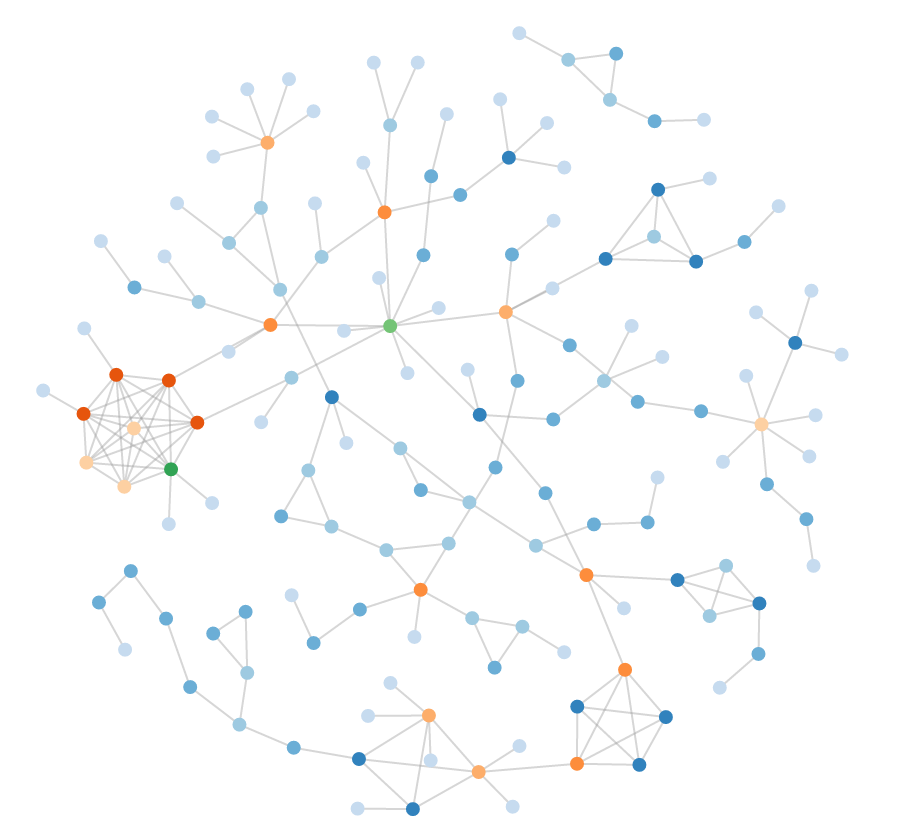
Important
Languages and technologies used: Javascript, NodeJS, HTML, CSS
Mentors: Federico Capoano (more mentors TBA).
Project size: 350 hours.
Difficulty rate: medium/hard.
The goal of this project is to improve the new version of the netjsongraph.js visualization library, which is has not been released yet and is available in the gsoc2019 branch of netjsongraph.js on github.
Prerequisites to work on this project
The contributor should have a proven track record and experience with Javascript, React JS, NodeJS, HTML and CSS.
Familiarity with OpenWISP Network Topology and OpenWISP Monitoring is a plus.
Expected outcomes
We want to make the geographic map feature and the logical map feature more similar to MeshViewer, see the screenshots below for reference, you can find a demo of this application in the repository just linked.
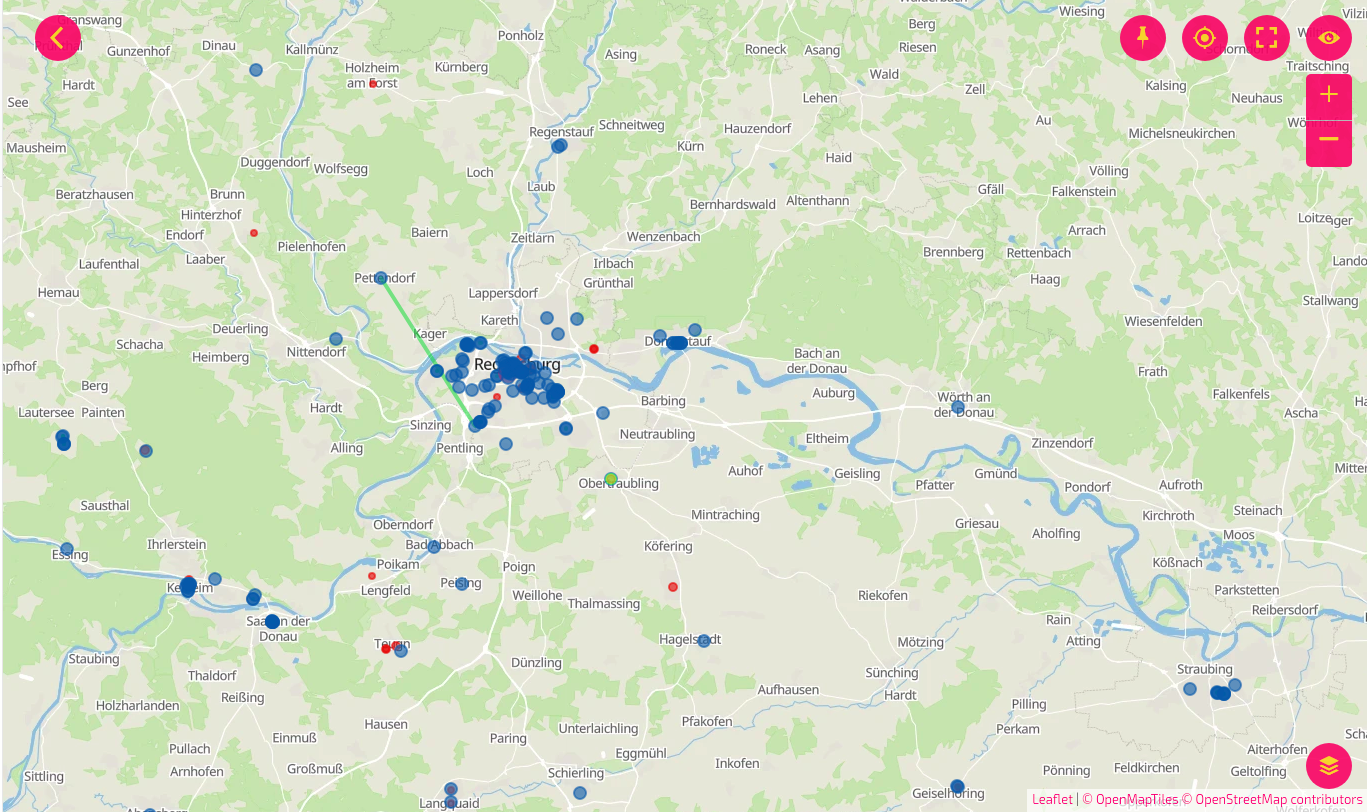
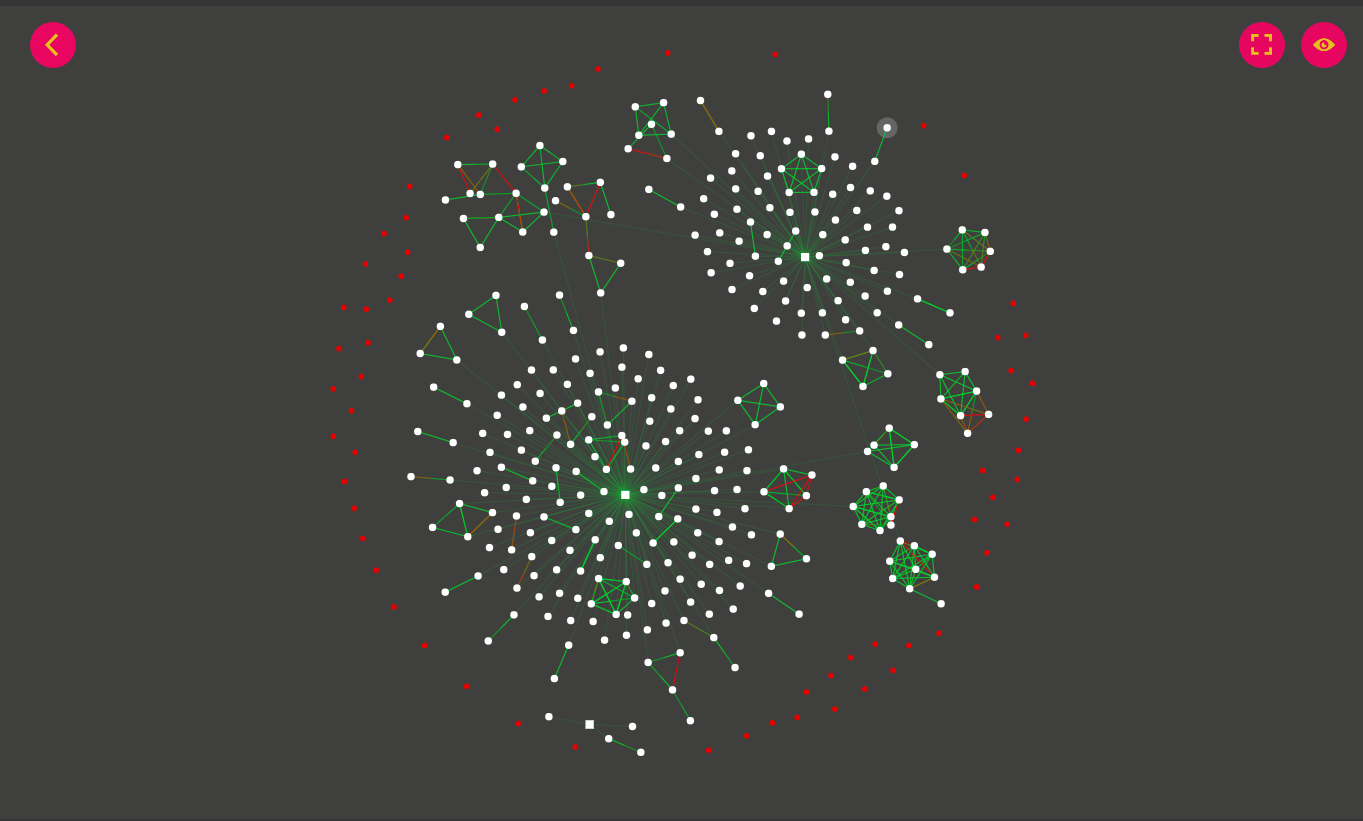
Fix zoom animation: when the map is zoomed, there's a delay between the zoom of the map and the repositioning of the elements which looks pretty weird
Add a clustering feature to the geographic map: when there are multiple overlapping elements group them as one cluster:
the cluster shall expand when it's hovered with the mouse
the cluster shall expand when the map zoom increases
the cluster may behave differently if the nodes have links to other nodes, a solution which works well aesthetically should be found
Test the library on narrow screens and ensure quirks are fixed
Add support for loading map data using GeoJSON
Allow loading more than 1000 devices by using pagination, load max 10K points by default (e.g.:
maxPointsFetched), make this max value configurableWhen more points are present than the configured
maxPointsFetchedvalue, if the map is zoomed more than a specific level (which shall also be configurable and have a good default), load more data from the API by specifying geographic extent, implement a mocking server for this feature on the server sideUpdate OpenWISP Network Topology to use the new version of this library
Modify OpenWISP Network Topology to provide real time updates
Change the code of OpenWISP Monitoring so that the map dashboard is implemented using this library instead of using its own custom implementation
Keep in mind the underlying visualization library can be changed if needed.
Add iperf bandwidth monitoring check to OpenWISP Monitoring
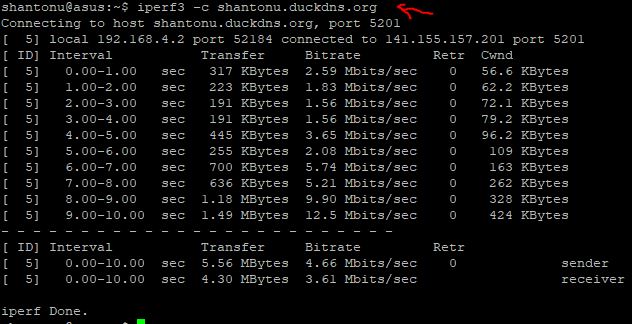
Important
Languages and technologies used: Python, Django, iperf3.
Mentors: Federico Capoano, Gagan Deep (more mentors TBA).
Project size: 175 hours.
Difficulty rate: easy/medium.
The goal of this project is to add a bandwidth test using iperf3,
using the active check mechanism of OpenWISP Monitoring.
The use case is to perform periodic bandwidth test to measure the max bandwidth available (TCP test) and jitter (UDP).
On a macro level, the check would work this way:
OpenWISP connects to the device (only 1 check per device at time) via SSH and launches iperf3 as a client, first in TCP mode, then in UDP mode, iperf is launched with the
-jflag to obtain json outputThe collected data is parsed and stored as a metric (bandwidth information and jitter)
SSH connection is closed
Prerequisites to work on this project
The student must demonstrate good understanding of OpenWISP Monitoring, and familiarity with Linux and iperf3.
Expected outcomes
The outcomes we expect from this project are the following:
Create iperf check class, the check must use the connection module of openwisp-controller to connect to devices using SSH
If a device has no active Connection the check will be skipped and a warning logged
This check should be optional and disabled by default
We can run it by default every night
Allow configuring the iperf server globally and by organization with a setting, e.g.:
OPENWISP_MONITORING_IPERF_SERVERS = {
"": ["<DEFAULT_IPERF_SERVER_HERE>"],
"<org-pk>": ["<ORG_IPERF_SERVER>"],
}
It shall be possible to specify a list of iperf servers, this is important because on larger systems 1 server will not be enough
We have to implement a lock to allow only 1 iperf check per server at time that is: for every server available, only 1 check can be performed at any one time, so the lock has to take this account when calculating the cache-key
SSH into device, launch iperf TCP client, repeat for UDP, collect data of both tests in a data structure
Handle failures, if server is down, we can store 0, which would trigger an alert (investigate the alert settings functionality)
Implement logic which creates the metric, chart and alert settings objects
Save data (tcp max bandwidth, UDP jitter)
Document how this check works
Document how to set up and use the check step by step (explain also how to set up a new iperf server)
Achieve at least 99% test coverage for the code added for this feature.
Github issue: [monitoring/checks] Add iperf check.
Improve UX of OpenWISP Monitoring
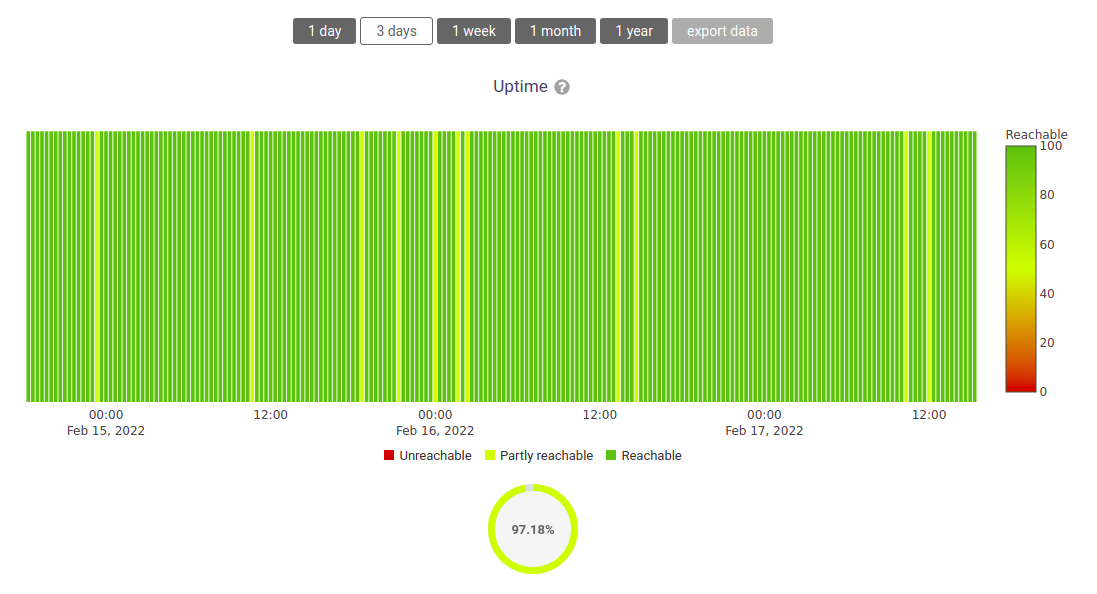
Important
Languages and technologies used: Python, Django.
Mentors: Ajay Tripathi, Federico Capoano.
Project size: 175 hours.
Difficulty rate: easy.
The goal of this project is to improve OpenWISP Monitoring by working on features and changes that have been noted down during the last 2 years of usage of this module and have the aim of improving the user experience in analyzing the collected monitoring data, as well as the developer user experience in extracting data from the system.
Prerequisites to work on this project
The student must demonstrate good understanding of OpenWISP Monitoring, and should have a basic knowledge of NetJSON format.
Expected outcomes
[change] Reachable bar chart: show different color for barely reachable #301
[feature] Zooming graphs: reload data in order to provide a detailed view #27
[feature] Add REST API endpoints for device which include monitoring info #290
[feature] Add possibility to connect to *InfluxDB* on unix domain socket #312
Add more timeseries database clients to OpenWISP Monitoring
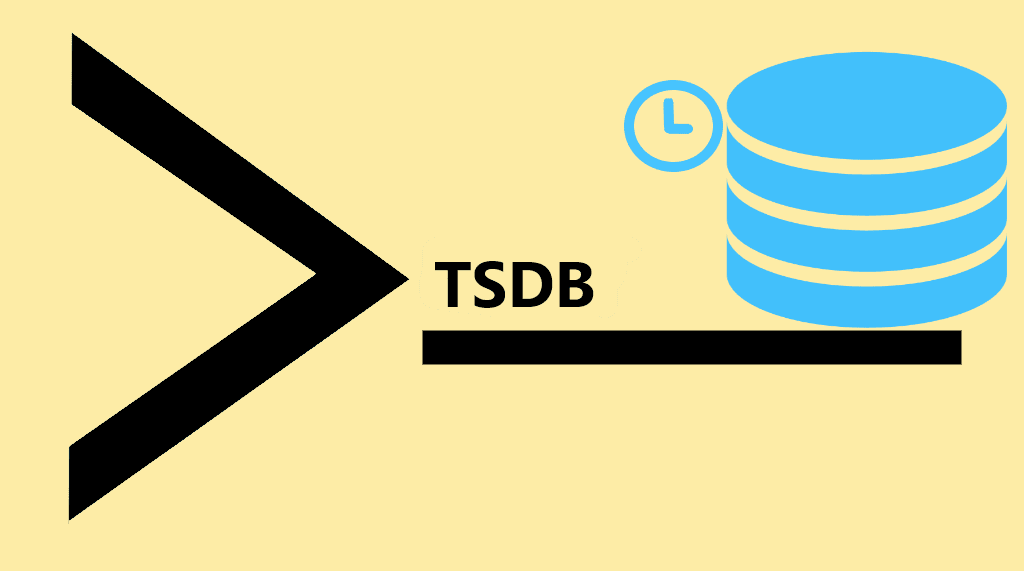
Important
Languages and technologies used: Python, Django, InfluxDB, Elasticsearch.
Mentors: Federico Capoano, Gagan Deep (more mentors TBA).
Project size: 175 hours.
Difficulty rate: medium.
The goal of this project is to add more Time Series DB options to OpenWISP while keeping good maintainability.
Prerequisites to work on this project
The student must demonstrate good understanding of OpenWISP Monitoring, and demonstrate basic knowledge of NetJSON format, InfluxDB and Elasticsearch.
Expected outcomes
Complete the support to Elasticsearch. Support to Elasticsearch was added in 2020 but was not completed.
The old pull request has to be updated on the current code base
The merge conflicts have to be resolved
All the tests must pass, new tests for new charts and metrics added to InfluxDB must be added (see [feature] Chart mobile (LTE/5G/UMTS/GSM) signal strength #270)
The usage shall be documented, we must make sure there's at least one dedicated CI build for Elasticsearch
We must allow to install and use Elasticsearch instead of InfluxDB from ansible-openwisp2 and docker-openwisp
The requests to Elasticsearch shall be optimized as described in [timeseries] Optimize elasticsearch #168.
Add support for InfluxDB 2.0 as a new timeseries backend, this way we can support both
InfluxDB <= 1.8andInfluxDB >= 2.0.All the automated tests for InfluxDB 1.8 must be replicated and must pass
The usage and setup shall be documented
We must make sure there's at least one dedicated CI build for Elasticsearch
We must allow choosing between InfluxDB 1.8 and InfluxDB 2.0 from ansible-openwisp2 and docker-openwisp.